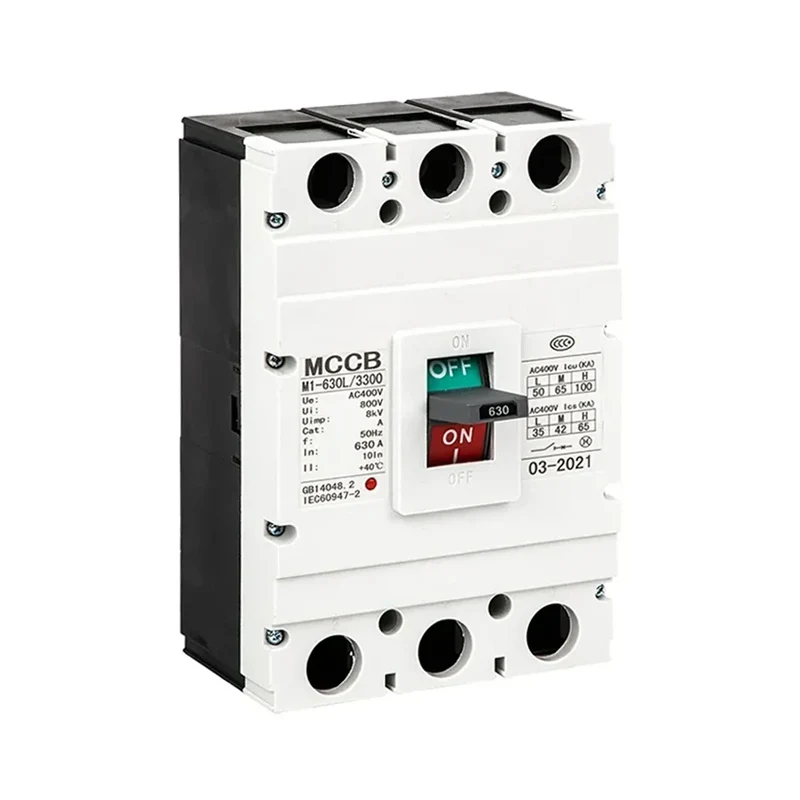What is an Air Circuit Breaker and How Does It Work?
2024-10-18
Air circuit breakers (ACBs) are crucial components in modern electrical systems, protecting both equipment and people from electrical faults. They are designed to interrupt the flow of electricity when an overcurrent, short circuit, or other abnormal conditions occur. In this blog, we'll explore the basics of air circuit breakers, how they work, and their importance in ensuring electrical safety.
1. What is an Air Circuit Breaker?
An air circuit breaker is a type of circuit breaker that uses air as the medium to extinguish the arc that forms when the breaker interrupts the electrical current. ACBs are typically used in low-voltage systems, but they can also be employed in medium-voltage systems depending on the design.
Air circuit breakers play a vital role in industrial, commercial, and residential electrical systems by safeguarding against electrical faults such as short circuits, overloads, and ground faults. They are often used in applications like power distribution, protection of electrical motors, transformers, and large machinery.
2. How Does an Air Circuit Breaker Work?
The primary function of an air circuit breaker is to detect abnormal current conditions and cut off the power supply to prevent damage or hazards. Here's a breakdown of how they operate:
- Normal Operation: During normal operation, the ACB allows electricity to flow uninterrupted through the circuit. It continuously monitors the current flow to detect irregularities.
- Fault Detection: When a fault occurs, such as an overload or short circuit, the ACB detects the excessive current. This triggers the breaker to trip, opening the contacts and stopping the flow of electricity.
- Arc Extinguishing: When the contacts open, an electric arc forms between them. The ACB uses air to extinguish this arc. The arc chute, a specially designed chamber inside the breaker, channels and cools the arc, allowing the circuit to open safely.
- Resetting: After the fault has been cleared, the breaker can be manually or automatically reset, depending on the type of ACB. This allows the electrical system to resume normal operation.

3. Types of Air Circuit Breakers
There are several types of air circuit breakers, each designed for specific applications and environments. Some of the most common types include:
- Plain Break Type: This is the simplest type of ACB, where the arc is extinguished in open air. While effective in smaller systems, this type may not be suitable for larger, more complex installations.
- Arc-Chute Type: In this design, the arc is drawn into an arc chute, a chamber designed to cool and divide the arc into smaller segments. This is more efficient and faster at extinguishing the arc than the plain break type.
- Magnetic Blowout ACB: This type of ACB uses a magnetic field to blow the arc into the arc chute, enhancing the arc-extinguishing process. This is commonly used in systems with higher fault currents.
- Air Blast ACB: In this version, a blast of compressed air is used to blow out the arc quickly. Air blast ACBs are ideal for applications where quick recovery time is essential.
4. Advantages of Air Circuit Breakers
Air circuit breakers offer several advantages, making them a preferred choice for many electrical systems:
- Arc Extinguishing Efficiency: ACBs can effectively extinguish arcs in open air, making them suitable for high-power systems.
- Adjustable Settings: Most ACBs have adjustable tripping settings, allowing users to customize the breaker to meet specific protection needs.
- Reliability: ACBs are known for their reliability and durability, making them ideal for heavy-duty industrial and commercial applications.
- Safety: They provide comprehensive protection against multiple fault conditions, reducing the risk of electrical fires and equipment damage.
5. Applications of Air Circuit Breakers
Air circuit breakers are used in various settings, including:
- Power Distribution Systems: ACBs are essential in power distribution panels, protecting the electrical network from overloads and short circuits.
- Industrial Machinery: They protect large industrial machines from electrical faults, ensuring safe and continuous operation.
- Commercial Buildings: ACBs are commonly found in commercial buildings, safeguarding the electrical infrastructure and preventing fire hazards.
Conclusion
Air circuit breakers are vital components in modern electrical systems, providing protection against electrical faults and ensuring the safe operation of equipment. By understanding how they work, their types, and their applications, you can appreciate the importance of these devices in maintaining electrical safety and preventing costly damage. Whether in industrial plants, commercial buildings, or power distribution systems, air circuit breakers play an essential role in safeguarding both people and assets.


